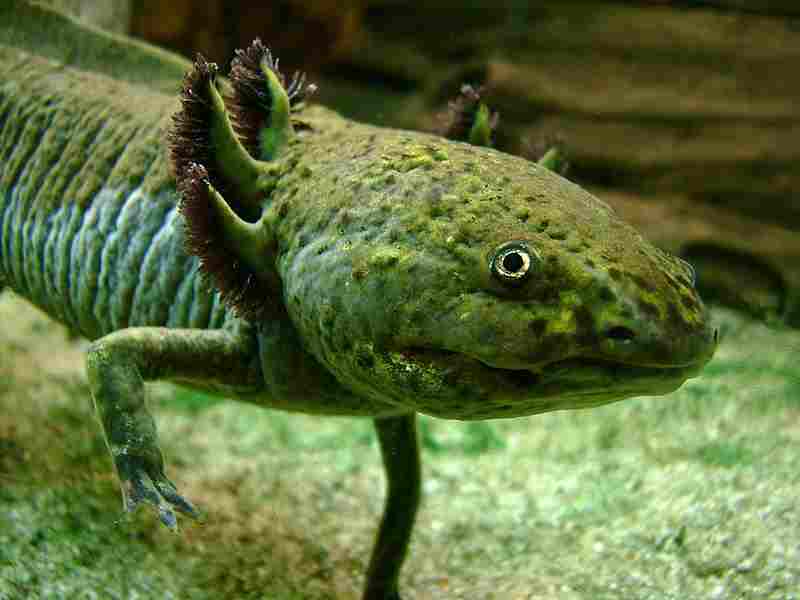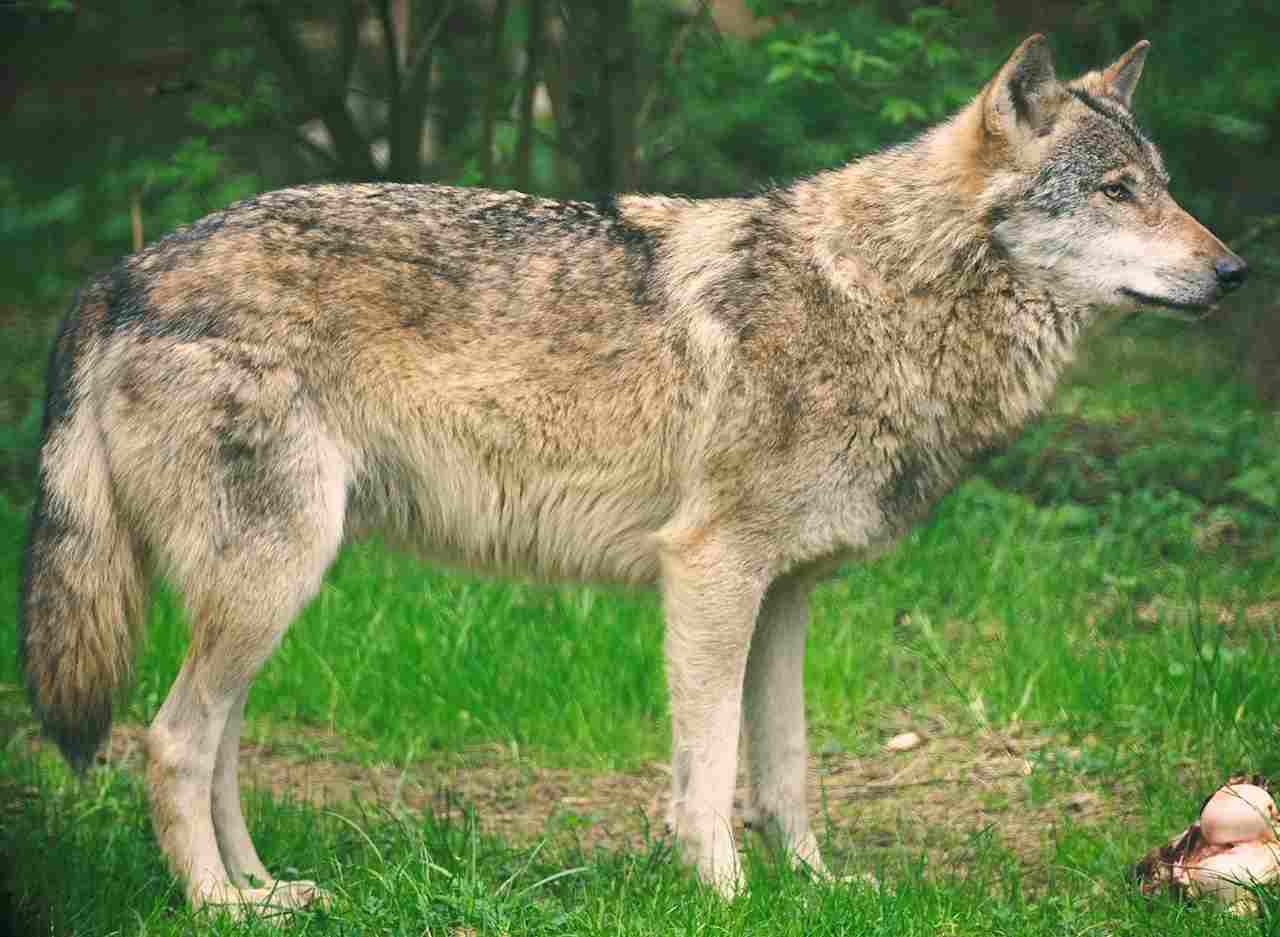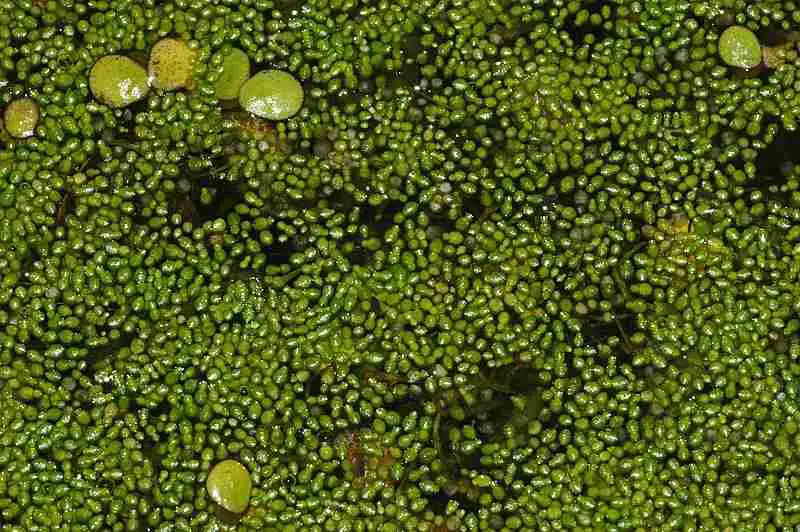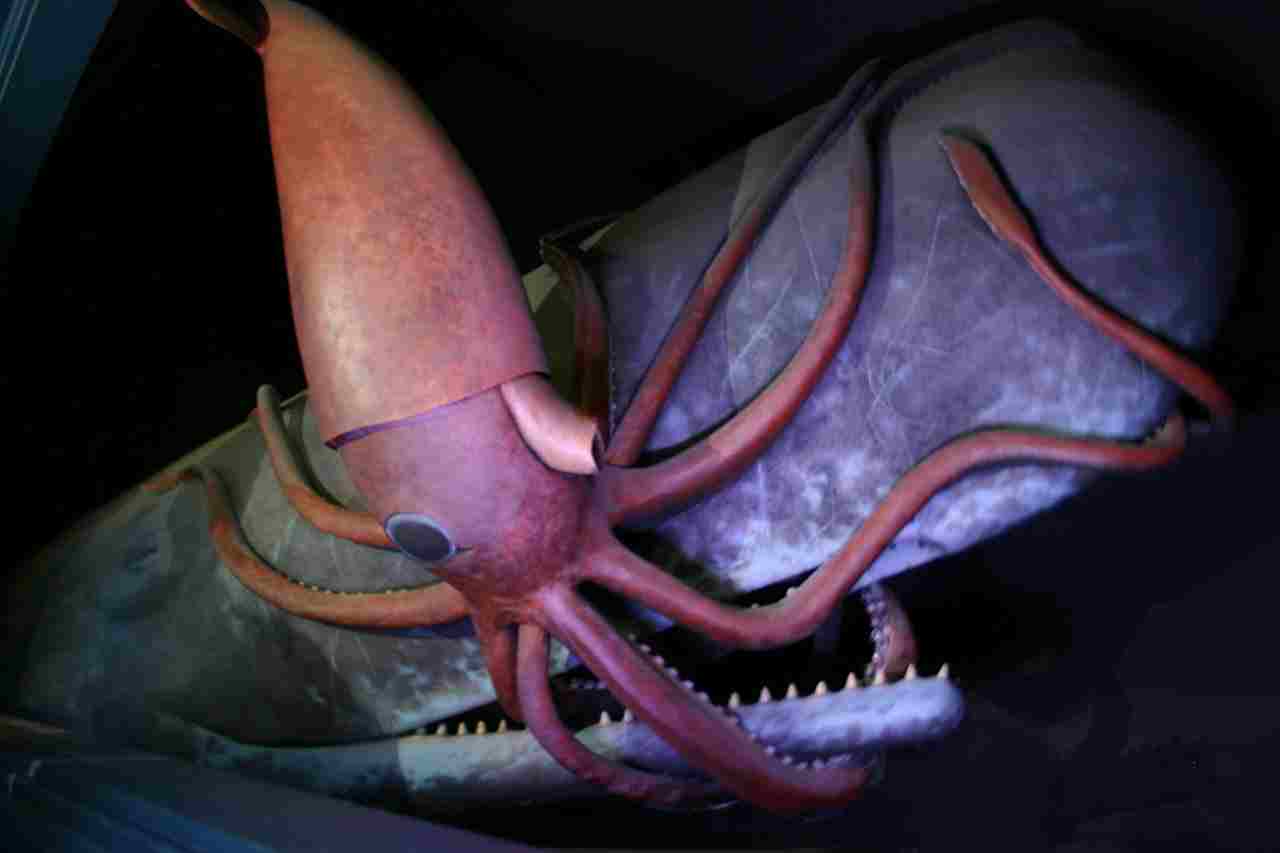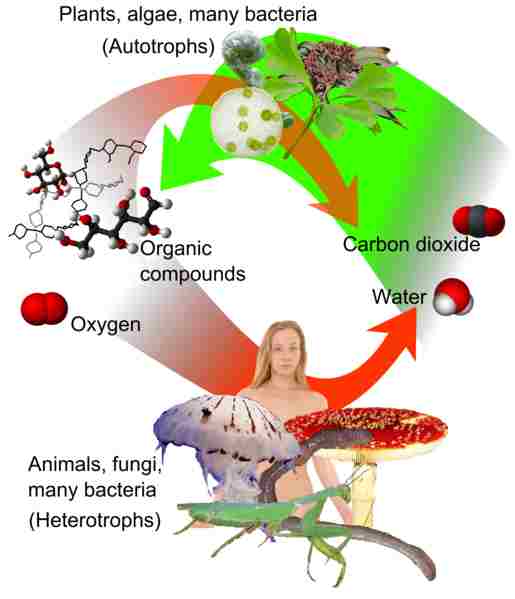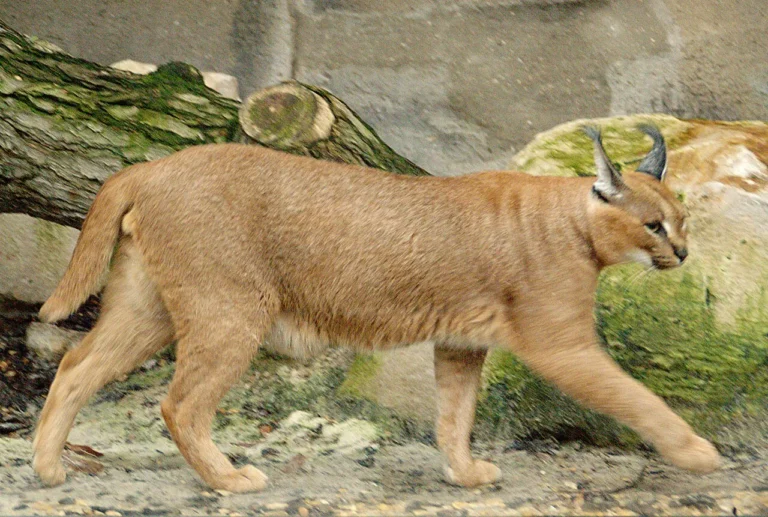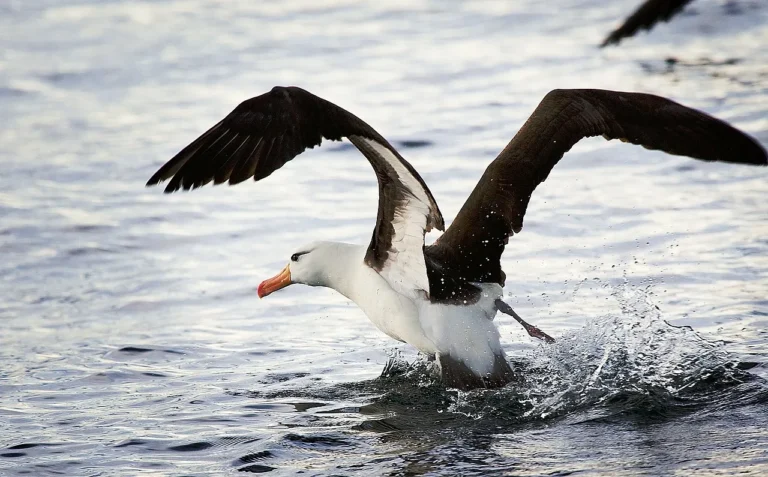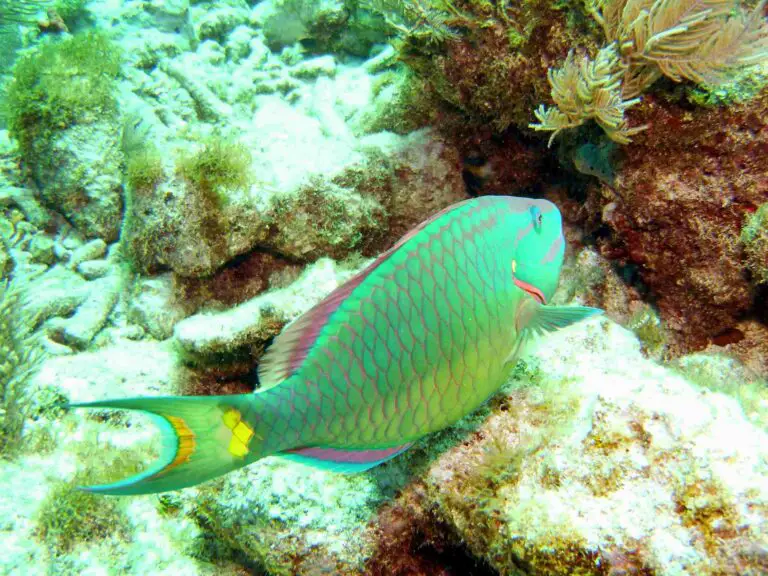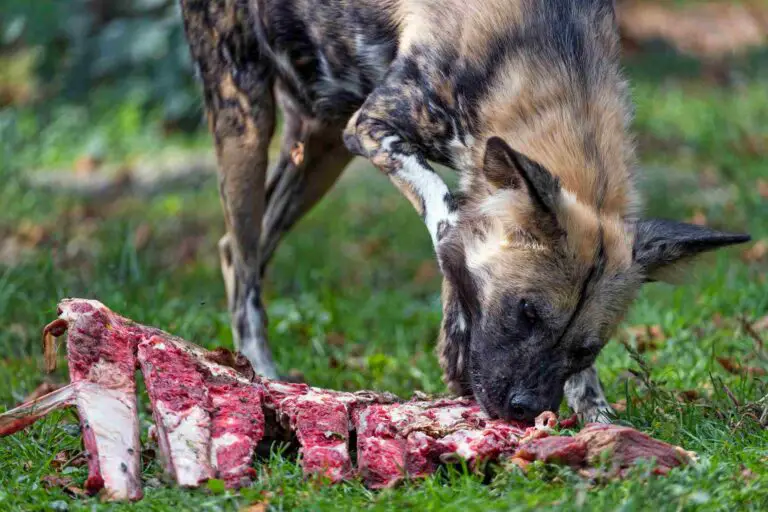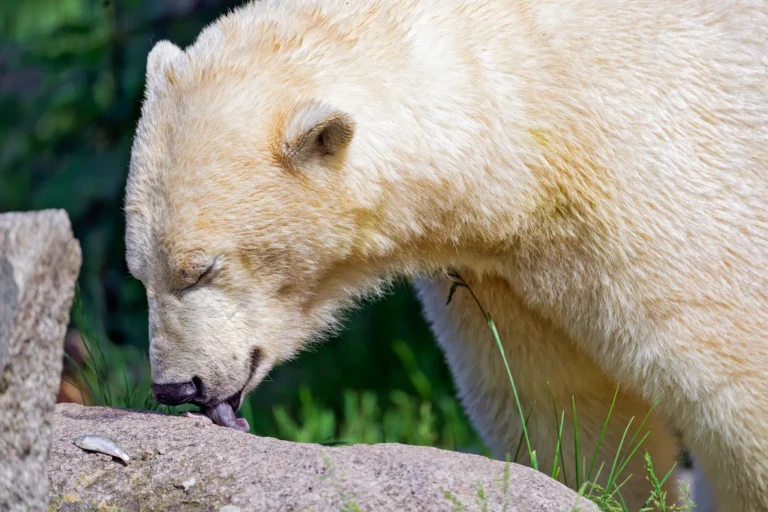What is a Tertiary Consumer? The Tertiary Consumer Concept Discussed
Tertiary consumers are high-level predators that are found in Level 4 of the food chain or energy pyramid; and feed on organisms in levels below them.
This article discusses some tertiary consumer animals, attributes and ecological functions.
Characteristics of Tertiary Consumer Animals
Characteristics of tertiary consumers include; relatively large size, carnivorous or omnivorous feeding behavior, and specialized predatory adaptations.
1. Relatively Large Size
Tertiary consumers are often larger in size compared to organisms in lower trophic levels. This size advantage allows them to overpower and consume their prey more efficiently.
The larger body size also provides them with the necessary energy reserves to sustain their predatory lifestyle. For example, the leopard, one of the tertiary consumers, exhibits a muscular build and a robust physique, enabling it to take down larger prey.
2. Carnivorous or Omnivorous Feeding Behavior
Tertiary consumers primarily rely on a diet consisting of other animals. They are either carnivorous, feeding exclusively on meat, or omnivorous, consuming both plant and animal matter.
This feeding behavior ensures that they obtain the necessary nutrients and energy required for their survival. The red-tailed hawk, a tertiary consumer, is a prime example of a carnivorous bird that preys on small mammals and birds.
3. Specialized Predatory Adaptations
Tertiary consumers possess a range of specialized predatory adaptations that enhance their hunting and feeding capabilities. These adaptations include:
* Teeth
Many tertiary consumers have sharp, well-developed teeth designed for tearing flesh or crushing bones. These teeth enable them to efficiently consume their prey.
For instance, the python, a tertiary consumer, has sharp, backward-curving teeth that aid in gripping and swallowing its prey whole.
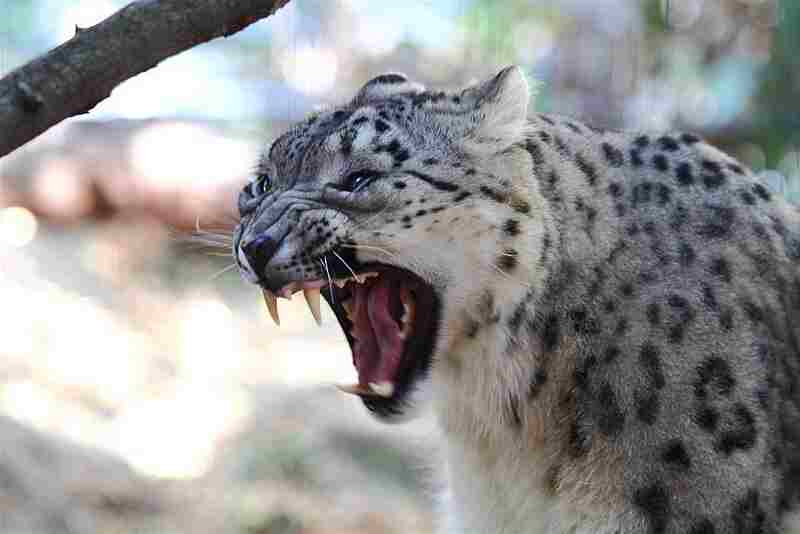
* Claws and Talons
Tertiary consumers often have strong, sharp claws or talons that assist them in capturing and restraining their prey.
These specialized appendages provide them with a firm grip and serve as weapons, allowing them to overpower their victims. The wolverine, known for its powerful claws, uses them to dig into snow or soil to uncover prey.
* Sensory Coordination
Tertiary consumers possess heightened sensory abilities that aid in locating and tracking their prey.
Their acute senses of sight, hearing, and smell enable them to detect potential food sources from a distance. The gray wolf, a tertiary consumer, relies on its keen sense of smell to locate and pursue its prey.
* Communication
Many tertiary consumers exhibit complex communication systems that facilitate cooperation and hunting strategies within their social groups.
For example, dolphins, tertiary consumers in marine ecosystems, use a combination of vocalizations and body movements to communicate and coordinate group hunting.
* Pack Hunting
Some tertiary consumers, such as wolves, engage in pack hunting. This cooperative behavior allows them to take down larger prey that would be challenging to capture individually.
Pack hunting also increases their chances of successful predation and ensures a steady food supply for the group.
These characteristics collectively contribute to the success and ecological importance of tertiary consumer animals. Their role as top predators helps regulate the population sizes of lower trophic levels, preventing overpopulation and maintaining the overall balance of ecosystems.
What are Some Examples of Tertiary Consumers?
Some examples of tertiary consumers in the ecosystem are; leopard, red-tailed hawk, python, wolverine, gray wolf, and dolphin.
It is not uncommon to face some confusion in the identification of suitable animals to classify in a given trophic level.
Some studies may place smaller predators like foxes, coyotes and seals as tertiary consumers, while others may instead include larger predators like lions and orcas.
The correctness of any given classification depends on the diversity and nature of organisms present in the ecosystem being analyzed.
In ecosystems with high biodiversity, smaller predators can be classified as tertiary consumers because of the presence of a broad array of predatory organisms that can fill the fifth level (quaternary consumers) effectively. This does not however apply to the average ecosystem which produces a maximum of four trophic levels.
1). Leopard
Leopards are felines that function as tertiary consumers in various ecosystems. As an apex predator, the leopard occupies the upper segment of the food chain and have a significant impact on the balance of their respective habitats.
Leopards are known for their exceptional hunting skills and adaptability, allowing them to thrive in a wide range of environments, including forests, grasslands, and mountains. They primarily feed on medium-sized ungulates such as deer, as well as smaller mammals like monkeys and rodents.
* Leopards are highly skilled hunters, relying on their stealth, agility, and powerful build to ambush and overpower their prey. Their retractable claws and sharp teeth enable them to deliver swift and lethal attacks.
* Being solitary animals, leopards require large territories to meet their dietary needs. This territorial behavior helps regulate the population of their prey species, preventing overgrazing and maintaining a healthy ecosystem balance.
* Leopards also contribute to localized nutrient cycling by consuming animal biomass and returning essential nutrients to the environment through their waste. This process supports the growth of vegetation and sustains other organisms within the ecosystem.
2). Red-tailed Hawk
Red-tailed hawks are magnificent birds of prey that play a crucial role as tertiary consumers in various ecosystems. With their keen eyesight, powerful talons, and impressive aerial abilities, these raptors are well-equipped to hunt and feed on a diverse range of prey.
* Red-tailed hawks mainly feed on relatively small to medium-sized mammals, such as rabbits and squirrels. Their sharp beaks and strong grip allow them to capture and kill their prey swiftly and efficiently.
* These hawks are also known for their exceptional hunting techniques, which often involve soaring high above their hunting grounds and scanning the landscape for potential prey. Once they spot their target, they dive down with speed and accuracy to make their capture.
* Red-tailed hawks are adaptable predators, capable of thriving in various habitats, including forests, grasslands, and deserts. Their ability to adjust their diet and hunting strategies according to the availability of prey ensures their survival in different environments.
* As tertiary consumers, red-tailed hawks contribute to the regulation of prey populations, preventing overpopulation and maintaining a stable/resourceful ecosystem. By controlling the numbers of small herbivorous mammals, they help to prevent excessive grazing and the depletion of vegetation.
* Additionally, red-tailed hawks play a vital role in nutrient cycling within their environment. Through their consumption of prey and subsequent excretion and death/biodegradation, they transfer energy and nutrients to other organisms in the food chain, ultimately benefiting other organisms and supporting the overall health of the ecosystem.
3). Python
Pythons are large reptiles that often serve as tertiary consumers in various ecosystems. With their unique adaptations and hunting strategies, pythons play a crucial role in maintaining the balance of the food chain.
* Pythons are constrictor snakes, meaning they capture their prey by coiling their bodies around them and squeezing until they suffocate. This method allows them to prey on a wide range of animals, including small mammals, birds, medium-to-large-sized mammals, and other reptiles.
* These snakes have a remarkable ability to stretch their jaws and swallow prey whole, owing to their possession of flexible ligaments and expandable skin. This allows them to consume prey that is much larger than their own head size.
* Pythons are ambush predators, patiently waiting for their prey to come within striking distance. They rely on their excellent camouflage and stealthy movements to remain undetected until the perfect moment to strike.
* As tertiary consumers, pythons help regulate the populations of their prey, preventing overpopulation and maintaining a healthy ecosystem. By controlling the numbers of small mammals and birds, they contribute to the overall balance of the food chain.
* Pythons also play a role in the cycling of nutrients within their environment.
After consuming their prey, they digest the nutrients and release them back into the ecosystem through their waste. This process helps to distribute essential nutrients and energy to other organisms in the food chain.
* It is worthy of note that pythons can have a significant impact on local ecosystems when introduced to non-native habitats. In some cases, they can thrive as invasive species and disrupt the balance of the ecosystem by preying on native wildlife.
4). Wolverine
Wolverines are medium-sized mammals that also act as tertiary consumers in different ecosystems. With their unique characteristics and hunting abilities, wolverines contribute to the balance of the food chain and the overall health of their habitats.
* Wolverines are known for their strength and agility, making them formidable predators. They have sharp claws and powerful jaws that allow them to take down prey larger than themselves, including small mammals, birds, and even carrion.
* These solitary animals have a wide-ranging habitat, from arctic tundra to dense forests. Their adaptability enables them to thrive in diverse environments, where they act as top predators, regulating the populations of their prey.
* Wolverines are opportunistic hunters, scavenging for food when necessary. They have a keen sense of smell, which helps them locate carrion buried under snow or hidden in dense vegetation. This ability allows them to take advantage of available food sources, contributing to the recycling of nutrients in the ecosystem.
* As tertiary consumers, wolverines help maintain the balance of the food chain by controlling the populations of their prey. By preying on smaller mammals and birds, they prevent overpopulation and ensure the survival of other species within the ecosystem.
* Wolverines also have an important role in seed dispersal. They often bury their prey or store it in hidden locations for later consumption. In doing so, they inadvertently distribute seeds from the consumed fruits or plants (that is; in the digestive tracts of these prey), contributing to the regeneration and diversity of plant species in their habitats.
* It is worth noting that wolverines are highly adaptable and resilient animals. However, they face threats such as habitat loss and climate change, which can impact their populations and disrupt the delicate balance of ecosystems they inhabit.
5). Gray Wolf
Gray wolves are large canids that can be classified as tertiary consumers in various ecosystems. With their unique physiology, behaviors and hunting strategies, gray wolves contribute to the balance and stability of the food chain.
* Gray wolves are highly social animals, living in packs that consist of an alpha pair and their offspring. This social structure allows them to work together during hunts, increasing their chances of success. Their cooperative hunting behavior is also effective for regulating the populations of their prey.
* As top predators, gray wolves primarily feed on herbivores such as deer, elk, and moose. By preying on these primary consumers, they help control their populations and prevent overgrazing, which can have detrimental effects on the ecosystem. This regulation ensures the health and diversity of plant species in the habitat.
* Gray wolves are skilled hunters, which rely on their keen senses and teamwork to bring down their prey. They use their acute hearing and sense of smell to locate and track potential targets. Once a suitable prey is identified, the pack works together to chase, surround, and take down the animal.
* In addition to herbivores, gray wolves also scavenge on carrion when necessary. This scavenging behavior helps maintain the balance of the food chain by recycling nutrients and reducing waste.
* The presence of gray wolves in an ecosystem has cascading effects on other species. Their predation can indirectly benefit smaller predators and scavengers by providing them with carrion or reducing competition for resources.
* However, the absence or decline of gray wolves can have negative consequences. Without their regulation, herbivore populations can increase rapidly, leading to overgrazing and habitat degradation.
6). Dolphin
Dolphins are large marine mammals that can be referred to as tertiary consumers in the aquatic ecosystem. Their unique characteristics and adaptations make them efficient predators and contribute to the overall stability/productivity of the food chain.
* Dolphins are highly intelligent and social animals, often living in pods that consist of several individuals. This social structure enables them to work together during hunts, and increases their chances of success. Their cooperative hunting behavior is not only effective for capturing prey but also for regulating the populations of their prey species.
* As tertiary consumers, dolphins feed mainly on smaller fish and mollusks like squid. They are skilled hunters, using their exceptional speed and agility to chase down their prey. Dolphins have streamlined bodies and powerful tails that enable them to swim swiftly through the water, making it easier for them to catch their prey.
* Dolphins have a remarkable ability to communicate and coordinate their hunting strategies. They use a series of clicks, whistles, and body movements to communicate with each other and coordinate their movements during hunts. This communication is crucial for successful hunting and ensures the efficiency of their cooperative hunting behavior.
* In addition to fish and squid, dolphins also consume other marine organisms such as crustaceans and octopuses. Their diverse diet helps maintain the balance of the marine ecosystem by preventing the overpopulation of certain species.
* Dolphins are also known to exhibit playful behavior, often seen riding the waves and leaping out of the water. While this behavior may seem purely recreational, it also serves a purpose in their hunting strategies. By leaping out of the water, dolphins can get a better view of their surroundings and locate potential prey more easily.
* The presence of dolphins in marine ecosystems has a significant impact on the overall health and stability of the ecosystem. As tertiary consumers, they help regulate the populations of their prey species, preventing overgrazing and maintaining the balance of the food chain.
* However, dolphins are also vulnerable to various threats, including habitat degradation, pollution, and overfishing. Conservation efforts are crucial to protect these remarkable creatures and ensure the preservation of their important role as tertiary consumers in ecosystems.
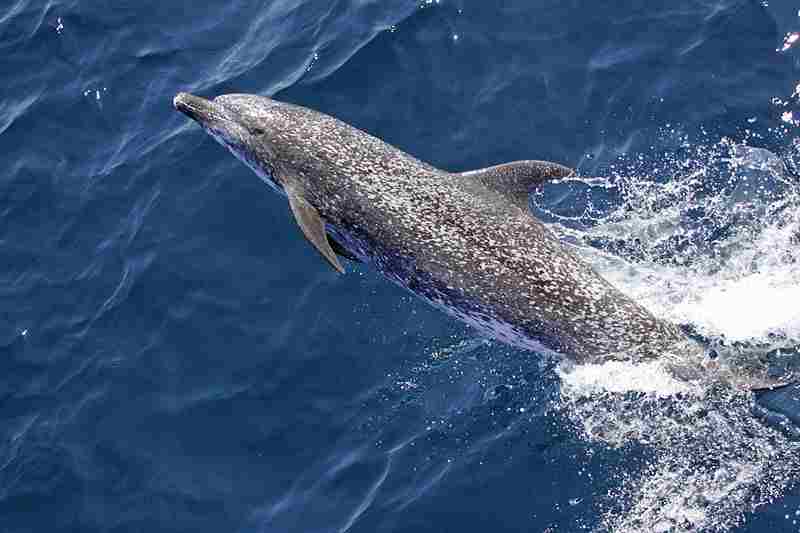
FAQs
Please rewrite the question in title case form with question marks, then provide answer(s). please consider all given hints, as well as earlier discussions on this topic
1. What is a Tertiary Consumer Example?
One example of a tertiary consumer is the “leopard.” Leopards are carnivorous mammals that primarily feed on herbivores such as deer and antelope. They are known for their stealth and agility, allowing them to effectively hunt and capture their prey.
Another example is the “red-tailed hawk.” These birds of prey are skilled hunters and feed on small mammals, birds, and reptiles. They are known for their keen eyesight and powerful talons, which enable them to catch their prey from the air.
2. What is an Example of a Third Order Consumer?
A third order consumer, also known as a tertiary consumer, is an organism that occupies the highest level in the food chain. They are called “third order” consumers because they occupy the third consumer level after primary and secondary consumers. It must be noted that in the overall trophic sequence, third order consumers are placed at the fourth level.
Third order consumers feed on secondary consumers, which in turn feed on primary consumers.
An example of a third order consumer is the “python.” Pythons are large, non-venomous snakes that prey on a variety of animals, including small mammals and birds. They are known for their ability to constrict their prey and swallow them whole.
Another example of a third order consumer is the “wolverine.” Wolverines are carnivorous mammals that primarily feed on small to medium-sized animals, such as rodents and other mammals.
They are known for their strength and agility, allowing them to take down larger prey. These examples highlight the important role that tertiary consumers play in maintaining the balance of ecosystems.
3. What is the Meaning of Tertiary Consumer in Geography?
In geography, the term “tertiary consumer” refers to an organism that occupies the highest level in the food chain within a specific ecozone or habitat.
Tertiary consumers are typically carnivores or omnivores that feed on secondary consumers, which in turn feed on primary consumers. They are instrumental in maintaining the balance of energy flow and population dynamics within an ecosystem.
Tertiary consumers are often apex predators, meaning they have few or no natural predators themselves. They exert top-down control on the population sizes of lower trophic levels, helping to regulate the abundance of species throughout the food web.
Examples of tertiary consumers in geography include large predators like wolves in boreal forests, lions in savannas, and bears in temperate deciduous forests. These animals rely on the energy and nutrients obtained from consuming other animals to survive and thrive in their respective habitats.
4. What is the Difference Between a Producer and Secondary consumer
The difference between a producer and a secondary consumer lies in their respective trophic positions and modes of energy acquisition; where the former relies on photosynthetic processes and the latter relies on other organisms to serve as its food.
Producers, such as plants and algae, are organisms capable of photosynthesis. They convert sunlight, water, and carbon dioxide into energy-rich organic compounds, serving as the primary source of energy for all other organisms in the ecosystem. Producers occupy the first trophic level and are also known as autotrophs.
On the other hand, secondary consumers are organisms that feed on primary consumers. They occupy the third trophic level and are typically carnivores or omnivores. Secondary consumers obtain energy and nutrients by consuming other animals. They play a crucial role in regulating the population sizes of primary consumers and maintaining the balance of the ecosystem.
5. What is the Difference Between Tertiary and Quaternary Consumers
The main difference between tertiary and quaternary consumers lies in their trophic levels and the organisms they are able to consume. Tertiary consumers feed on secondary consumers, while quaternary consumers can feed on tertiary consumers. Both are essential for the functioning and stability of ecosystems.
Tertiary and quaternary consumers are both important components of the food chain, but they differ in their trophic levels and the types of organisms they consume.
Tertiary consumers occupy the fourth trophic level and are typically carnivores or omnivores. They feed on secondary consumers, which in turn feed on primary consumers. Tertiary consumers play a crucial role in controlling the population sizes of lower trophic levels and maintaining the balance of the ecosystem.
On the other hand, quaternary consumers occupy the fifth trophic level and are apex predators. They feed on tertiary consumers and have no natural predators themselves. Quaternary consumers have a higher impact on the dynamics of the entire food chain.
6. What are Some Examples of Secondary Consumers?
Examples of secondary consumers include the “lynx” and the “coyote”. The lynx is a carnivorous feline that primarily feeds on snowshoe hares, which are herbivorous primary consumers. The coyote, on the other hand, is an omnivorous canid that feeds on a variety of animals, including rabbits, rodents, and small mammals.
These examples highlight the diversity of secondary consumers and their ability to adapt to different environments and food sources. They are an essential link in the food chain, connecting primary consumers to higher trophic levels.
7. What are 10 Tertiary Consumers Examples?
Tertiary consumers play a crucial role in ecosystems as they occupy the highest trophic level. They are predators that feed on secondary consumers, as well as primary consumers. Ten examples of tertiary consumers are;
1. Leopard
2. River Dolphin
3. Grizzly Bear
4. Bald Eagle
5. Polar Bear
6. Crocodile
7. Puma
8. Golden Eagle
9. Gray Reef Shark
10. Snow Leopard
These examples demonstrate the diversity of tertiary consumers and their important role in natural ecosystems. It must be noted that classification of any given organism as a tertiary consumer is subjective and can vary from one scheme or context to another.
8. Is Eagle a Tertiary Consumer?
Yes, eagles are indeed tertiary consumers in many ecosystems. As apex predators, they occupy the highest trophic level and feed on secondary consumers such as rodents, small ungulates, fish, and birds.
Their diet consists mainly of other animals, making them an important part of the food chain. Eagles, with their sharp talons and keen eyesight, are skilled hunters and play a crucial role in maintaining the balance of their respective ecosystems.
So, eagles can be classified as tertiary consumers due to their position in the food web and their predatory behavior.
9. Is Snake a Tertiary Consumer?
The classification of snakes as tertiary consumers depends on their size and feeding behavior. Larger snake species, such as pythons, can be considered tertiary consumers as they prey on secondary consumers like rodents and birds.
However, smaller snake species that primarily feed on insects or other small prey may be classified as secondary consumers. It is important to consider the specific species and its role in the food chain when determining whether a snake is a tertiary consumer.
10. Are Tertiary Consumers Omnivores?
Yes, some tertiary consumers are omnivores, possessing the ability to consume both plant and animal matter.
Tertiary consumers can have varied diets, and some are indeed omnivores. An omnivore is an organism that consumes both plants and animals.
While many tertiary consumers are carnivores, feeding exclusively on other animals, there are some that have a more diverse diet. For example, certain species of bears are considered tertiary consumers and are known to eat both plant and animal matter. This flexibility in diet allows them to adapt to different food sources and environments.
11. Are Humans Tertiary Consumers?
Humans can indeed be considered tertiary consumers due to their ability to feed on other animals.
As omnivores, humans have a diverse diet that includes both plant and animal matter. While humans primarily consume plants and are classified as primary consumers, they also consume meat, making them capable of occupying a higher trophic level.
This flexibility in diet enables humans to obtain nutrients from various sources, and makes them adaptable to different environments. Therefore, humans can be classified as tertiary consumers, although their consumption of animal matter is not their sole source of nutrition.

